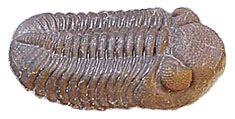Adventures on Earth column for the September 8 edition of The Review
Again the Outer Banks in North Carolina experienced overwash from a hurricane. Several years ago Route 12, the main highway along the Banks, was severed at Mirlo Beach just north of Rodanthe.
Storm surge from Hurricane Earl apparently washed over the highway in several places and severed the route, isolating communities to the south.
The Outer Banks are barrier islands – a thin strip of sandy land lying offshore. The islands are cut during storms and then fill in as ocean waves move sand up and down the beaches.
The barrier islands generally protect the mainland from storms, taking the brunt of storm surges and often deflecting storms back out to sea.
They are marginal places where life clings to a tenuous existence. Many creatures use the islands to nest or propagate.
Storms and currents move sand, making maritime navigation tricky. Pilots must know the locations of shifting sand bars as they follow dredged channels on their routes from ports to the sea.
The pirate Edward Teach (or Thatch), known as Blackbeard, used his knowledge of channels and sand bars to elude British navy patrols, but finally met his end off the island of Ocracoke in a battle with a British patrol as they maneuvered between sand bars..
Barrier islands are not stable land masses. The Outer Banks is moving slowly west, a progression that has been taking place for centuries. To the west of the existing Banks, a thin ribbon of sand is accumulating in Pamlico Sound – the next stand of the barrier islands.
At times, tree stumps are uncovered by ocean waves. The trees were once on the western side of the island, but as the island moved west the tree stumps ended up on the east side.
All of this is to say that barrier islands and hurricanes are part of the natural progression. If no humans moved onto the islands, the process would go on at the whims of nature.
It is the human incursions that create issues. Humans build on the islands, then go about stabilizing the sandy strips in order to protect their investment.
When storms hit, beaches erode, homes fall into the sea, and islands are cut in two, isolating communities until workers can fill in the newly created inlets and restore the roads.
In the memory of living people, hundreds of yards of ocean front have been eroded away. Homes that were once far from the beach are now washed by waves at high tide.
Walking along isolated Outer Banks beaches, one finds not just shells and nautical debris, but bits and pieces of what were once homes wood panels, framing, plumbing fixtures, sometimes entire walls.
This is what happens when people build on barrier islands. The Jersey Coast is another place where the eternal battle between people and nature takes place.
Municipalities spend fortunes replenishing beach sand, piping it from offshore back to the beach. The process repeats after storms over and over again.
Earl’s glancing blow wreaked havoc not with barrier islands, but with what humans put on those barrier islands. Islanders know that when they build out there their building will ultimately meet its fate in some storm.
Had Earl made landfall or a more direct blow, the damages would have been much worse. As it is, Outer Bankers will roll up their sleeves, repair damages, fill in new inlets, rebuild roads, and life will go on.
It always does in marginal habitats.

No comments:
Post a Comment